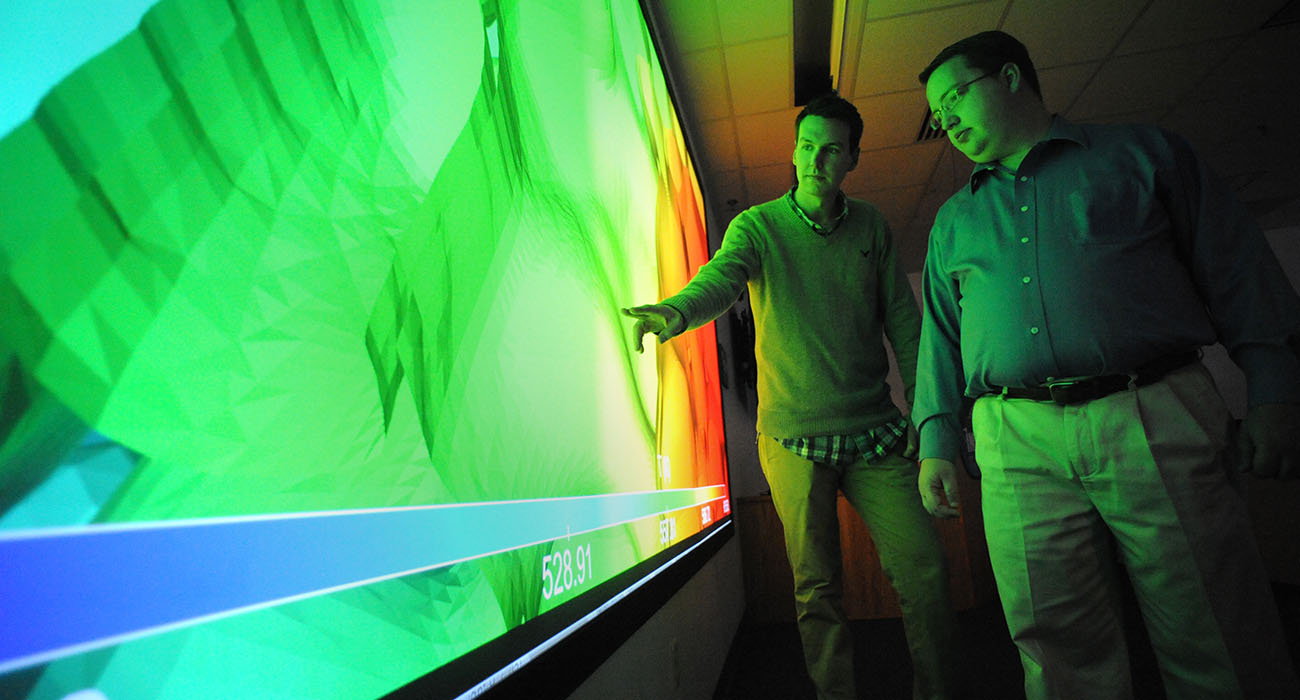High Performance Computing Modeling and Simulation Internships

Idaho National Laboratory University/College Internships-High Performance Computing Computational Modeling and Simulation AND VISUALIZATION.
The Opportunity:
Internships at Idaho National Laboratory
Idaho National Laboratory (INL) hosts over 300 undergraduate and graduate students each year to support INL’s mission. Opportunities for interns at INL range from nuclear engineering to cybersecurity and include non-scientific positions in various operations and business disciplines.
Join INL’s team and find your exceptional educational experience in a real-world work environment. INL offers a unique opportunity to learn, collaborate, innovate and conduct research with top researchers and professionals.
The Deliverables:
Interns will spend the first week of their assignment working with their mentor to outline their work scope and to secure resources for a successful internship. For the next several weeks, the mentor will provide considerable program assistance and guidance to the intern. In addition to regular activities, interns are invited to attend weekly seminars, tours and community events designed with career development in mind. Completion of a final project is highly recommended and can be completed through a variety of mediums – a traditional poster, electronic presentation or video.
The Process:
Through this single application, you are considered for all internship projects related to INL High Performance Computing, Modeling and Simulation, and Visualization. Simply complete the application questions which will help us identify what knowledge and experience you already have that may be related to the preferred qualifications for each individual internship project. It is common for applicants to receive consideration for multiple projects at varying times throughout the process. Mentors will make direct contact with applicants who meet their project qualifications to share the specific details of the project. On average, INL plans for approximately 300 internships each year. Most internships provide flexibility with start and end dates to account for varying university term schedules. We encourage early applications to increase the number of opportunities available to you.
The Projects:
--Computational radiation transport, irradiation damage, fluid dynamics, corrosion, nuclear fuel performance, reactor physics, structural dynamics, and modern software design are preferred. The work involves building and/or running applications using the INL’s MOOSE HPC development and runtime framework or running lower length scale (atomistic) simulations to obtain parameterizations for larger length scale applications. Applications include RELAP7 (reactor systems analysis), Rattlesnake (radiation transport), BISON (nuclear fuels performance), Marmot (microscale materials), MAMMOTH (reactor physics), Grizzly (structural mechanics), and Bighorn (two-phase conjugate heat transfer).
For the lower length scale work we use LAMMPS, SPPARKS, and VASP. Students wishing to develop software that are unfamiliar with C++ will be required to take a C++ programming class during their internship at INL. Students may also be involved in computational analysis of the Advanced Test Reactor (ATR) and TREAT, the Transient Reactor Test facility.
--Students interested in computational radiation transport, reactor physics and coupled multiphysics are desired. The work involves running applications using the INL’s MOOSE HPC development and runtime framework. Applications include Rattlesnake (radiation transport), BISON (nuclear fuels performance), and MAMMOTH (reactor physics). Students may also be involved in computational analysis of the Advanced Test Reactor (ATR) and TREAT, the Transient Reactor Test facility. Students will publicly present and submit a formal report summarizing their intern efforts. The intern will perform work supporting Rattlesnake, the MOOSE based radiation transport application for multiphysics simulations at INL, by developing a 3D mesh for ATR and performing Rattlesnake and MAMMOTH simulations of the core. The student will become familiar with Python to automate the mesh building process.
--The student will develop finite element models to study the 3D behavior of hydrogen in nuclear fuel cladding. The student would support formal report and technical paper preparation.
--Development of the BISON Fuel Performance Code. The applicant should have a strong background in finite element analysis, C++ code and solid mechanics. While at INL the student will use the skills mentioned to assist in high impact modeling problems such as loss of coolant accidents and pellet cladding mechanical interaction.
--Develop a methods for coupling the deterministic core analysis code PHISICS with a Monte Carlo analysis code (SEPRENT). The work will also support research into hybrid neutron transport methods useful for high temperature reactor research.
--Support the Applied Visualization Laboratory. The candidate should be proficient in one of the following programming languages: C, C++, Java, C#, or Python. The student will learn advanced software engineering and visualization skills, as well as, data analytics for the use in scientific workflows.
Completion of classes in computer graphics, numerical analysis, and data structures is desired. The student will develop visualization and analytic tools for researchers and scientists at the laboratory. The student may also assist in the development of advanced storage, data science, and visualization techniques. The student would support formal report preparation.
- Have the ability to pass a background check
- Possess a minimum overall 3.0 Grade Point Average (GPA)
- Complete this application, which is used to place students based on their academic interests, coursework, knowledge and communication skills
- Enrolled full time student status at an accredited college or university (undergraduate, graduate, PhD).

-
Current resume or Curriculum Vitae (CV)
-
Unofficial Transcripts (include current and completed degree programs)
-
Current class schedule and number of credits
-
Work with your career center to develop a resume or CV that is functional (this is your opportunity for a first impression)
-
Review the INL website and learn more about our business and research programs and how they could enrich your degree plan https://www.inl.gov/
-
Ask your professors if they have collaborated on INL research programs and seek their permission to list them as a reference
-
Review the INL Academic Partnerships web site for valuable information on our internship programs https://www.inl.gov/inl-initiatives/education/

